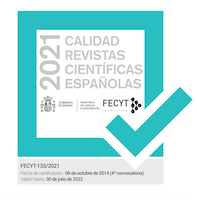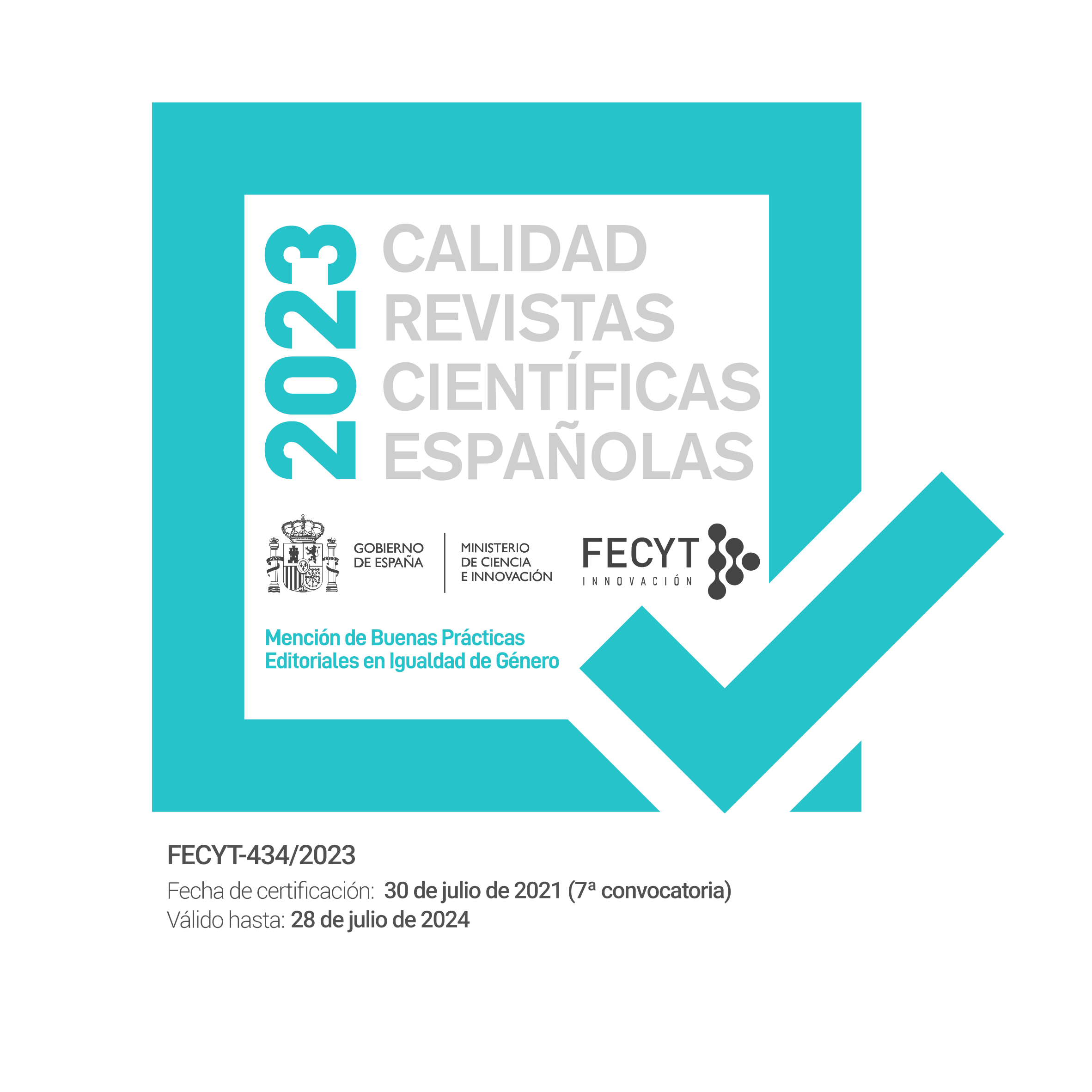Historical and Legal approach to the interrelation between Law and Information and Communication Technologies. The case of Fundamental Rights
Keywords:
legal evolution, internet, fundamental rights, Information and Communication TechnologiesAbstract
The emergence of the new Information and Communication Technologies has brought a multitude of advantages in the economic, cultural and political aspects of modern society, however, there have also been a multitude of conflicts and legal problems that pose a challenge for the Law. A historical-legal approach is taken to study the interrelation between Law and Information and Communication Technologies. The evolution of the Law and the peculiar relationship between Law and technology are discussed. Information and Communications Technologies are what, to a large extent, drive history. From this point of view, the current revolution of the new "Digital Era" is compared with the characteristics of other important technological revolutions. The fundamental rights of the personality are one of the most relevant concerns related to the Information and Communications Technologies since their use have serious implications regarding the delimitation of the right to honor, privacy, one's own image or freedom of expression. With the regulation of the fundamental rights of personality, new legal figures have emerged that are typical of the use of the Internet such as hate speech, digital censorship or the right to be forgotten. The Law is configured as the regulatory instrument that should fit these new figures and rights in today's society and also those that will emerge in the future, therefore the Law must adapt to new technologies and changes that will happen.
Keywords: legal evolution; Internet; fundamental rights; Information and Communication Technologies.
References
Aranda Serna, Francisco José. “La delimitación de la libertad de expresión en Internet. La confrontación de derechos y la censura digital.” Hacia una Justicia 2.0: actas del XX Congreso Iberoamericano de Derecho e Informática. Salamanca (2016): 15-28.
Becker, Gary S. “A Theory of Competition Among Pressure Groups for Political Influence.” The Quarterly Journal of Economics 98 (1983): 371-400.
Belda Iniesta, Javier, and Aranda Serna, Francisco José. “El paradigma de la identidad: hacia una regulación del mundo digital.” Revista Forense 422 (2015): 181-202.
Beyleveld, Deryck, and Brownsword, Roger. “Emerging Technologies, Extreme Uncertainty, and the Principle of Rational Precautionary Reasoning.” Law, Innovation and Technology 4 (2012): 35-65.
Brenner, Susan W. Law in an Era of “Smart” Technology. New York, 2007.
Brownsword, Roger, and Somsen, Han. “Law, Innovation and Technology: Before We Fast Forward – A Forum for Debate.” Law, Innovation and Technology 1 (2009): 1-73.
Cairns, John W. “Watson, Walton and the History of Legal Transplants.” Georgia Journal of International and Comparative Law 41 (2013): 637-696.
Castillo Jiménez, Cinta. “Protección del derecho a la intimidad y uso de las nuevas tecnologías de la información.” Derecho y conocimiento: anuario jurídico sobre la sociedad de la información y del conocimiento 1 (2001): 35-48.
Cohn, Margit. “Legal Transplant Chronicles: The Evolution of Unreasonableness and Proportionality Review of the Administration in the United Kingdom.” American Journal of Comparative Law 58 (2010): 583-629.
De la Parra Trujillo, Eduardo. “Los Derechos de la personalidad: Teoría general y su distinción con los derechos humanos y las garantías individuales.” Jurídica. Anuario del Departamento de Derecho de la Universidad Iberoamericana 31 (2001): 139-163.
Deakin, Simon. “Evolution for Our Time: A Theory of Legal Memetics.” Current Legal Problems 55 (2002): 1-42.
Díaz Soto, José Manuel. “Una aproximación al concepto de discurso del odio.” Revista Derecho del Estado 34 (2015): 77-101.
Elliot, E. Donald. “The Evolutionary Tradition in Jurisprudence.” Columbia Law Review 85 (1985): 38-94.
Gil Vallilengua, Lucía. “Los derechos al honor, a la intimidad y a la propia imagen en las redes sociales: la difusión no consentida de imágenes.” REDUR 14 (2016): 161-190.
Goodman, John C. “An Economic theory of the Evolution of Common Law.” The Journal of Legal Studies 7 (1978): 393-406.
Hildebrandt, Mireille. “A Vision of Ambient Law.” Regulating Technologies. Legal Futures, Regulatory Frames and Technological Fixed. Portland (2008): 174-192.
Hildebrandt, Mireille. “Legal and technological normativity: more (and less) tan twin sisters.” Techné 12 (2008): 169-183.
Jones, Owen D, and Goldsmith, Timothy H. “Law and Behavioral Biology.” Columbia Law review 105 (2005): 1-42.
Koops, Bert Jaap. “Criteria for Normative Technology: An Essay on the Acceptability of Code as Law in Light of Democratic and Constitutional Values.” Regulating Technologies. Oxford (2007): 157-174.
Morán Garrido, Teresa. “El derecho a la propia imagen.” Revista FEFPI (2018): 16-21.
Moses, Lyria Bennett. “Adapting the Law to Technological Change: A Comparison of Common Law and Legislation.” UNSW Law Journal 26 (2003): 394-417.
Mulani, Tanjim T., and Pingle, Subash V. “Internet of Things.” International Research Journal of Multidisciplinary Studies 2 (2016): 1-4.
Oliva Marañón, Carlos. “Redes sociales y jóvenes: una intimidad cuestionada en Internet.” APOSTA. Revista de Ciencias Sociales 54 (2012): 1-16.
Platero Alcón, Alejandro. “El derecho al olvido en internet. El fenómeno de los motores de búsqueda.” Opinión Jurídica 15 (2016): 243-260.
Schwartz, Richard D., and Miller, James C. “Legal Evolution and Societal Complexity.” American Journal of Sociology 70 (1964): 159-169.
Segerstrale, Ullica. “Colleagues in conflict: An in vivo analysis of the sociobiology controversy.” Biology and Philosophy 1 (1986): 53-87.
Slembeck, Tilman. “Ideologies, Beliefs and Economic Advice – A Cognitive – Evolutionary View on Economic Policy–Making.” Public Economics 12 (2000): 1-31.
Stephens, Mitchell. “Which Communications Revolutions Is It, Anyway?.” Journalism & Mas Communications Quarterly 75 (1998): 9-13.
Terrebonne, R. Peter. “A Strictly Evolutionary Model of Common Law.” The Journal of Legal Studies 10 (1981): 397-407.
Watson, Alan. “Society's Choice and Legal Change.” Hofstra Law Review 9 (1981): 1473-1484.
Yeung, Karen. “Can We Employ Design-Based Regulation While Avoiding Brave New World?.” Law, Innovation and Technology 3 (2011): 1-29.









